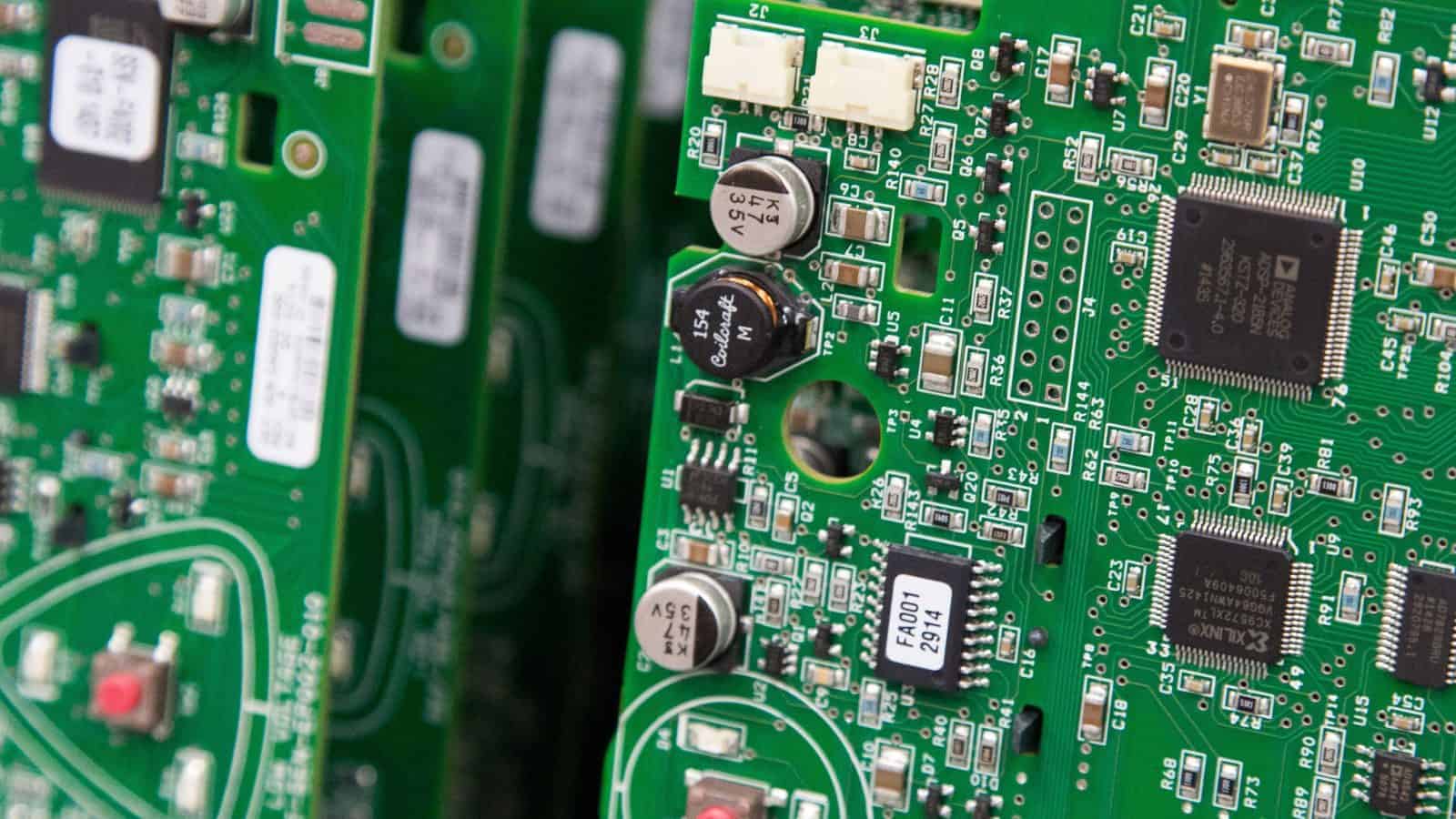Manufacturers Call for Repeal of Anti-Competitive R&D Tax Policy

This story can also be found within the NAM’s R&D action center.
In an industry where technology and processes can change quickly, manufacturers in the United States must be able to invest, grow and maintain their edge against foreign competitors. At a time when China is providing extensive support for its manufacturing industry, the NAM is pushing to ensure that the men and women who make things in America have the tools they need to succeed.
The challenge: Right now, China’s tax policies offer significant incentives for research and development. For example, China offers a super deduction for manufacturers performing R&D by allowing them to deduct 200% of their R&D expenses. This policy makes it more attractive for manufacturers in China to invest in innovation—and to out-compete manufacturers in the United States.
The comparison: Meanwhile, U.S. manufacturers, who drive more innovation than any other sector, face a harmful tax change that if not reversed will hurt jobs, innovation and competitiveness.
- Up until January 2022, a business in the United States could deduct 100% of their R&D expenses in the year during which those expenses occurred.
- But a change in the tax code that took effect this year now requires businesses to spread those deductions over a period of years—the so-called amortization requirement—making investment in innovation more expensive to conduct.
Recent action: This week, the NAM rallied the business community to urge Congress to repeal the recent tax change, so that businesses can continue to innovate, bolster the economy and create well-paying jobs.
- “Failing to reverse this change will cost well-paying jobs and reduce future innovation-directed R&D,” according to the NAM’s letter, which was signed by more than 400 companies and business organizations.
- “Requiring the amortization of research expenses will reduce R&D spending and lead to a loss of more than 20,000 R&D jobs in the first five years with the number of lost jobs rising to nearly 60,000 over the following five years. Moreover, when accounting for the spillover effect from R&D spending, nearly three times as many jobs will be affected.”
- “At a time of increasingly fierce global competition for research dollars, this change will make it harder for the next R&D dollar to be spent in the U.S. which will ultimately hurt future U.S. competitiveness.”
What we’re saying: “Research and development is the lifeblood of manufacturing,” said NAM Senior Director of Tax Policy David Eiselsberg. “It is what drives innovation, competitiveness, economic growth and the creation of high-paying jobs. But that is all at risk unless Congress quickly acts to repeal the harmful change in the tax treatment of R&D expenses.”
Finer point: “If Congress and the administration do nothing, small manufacturers will face a huge tax increase at the end of the year,” NAM Executive Vice President Erin Streeter warned. “This will have a crippling effect—and we’re mobilizing support at the NAM across the industry to get another hard-fought priority done.”
New NAM Board Members to Bolster Manufacturing Competitiveness
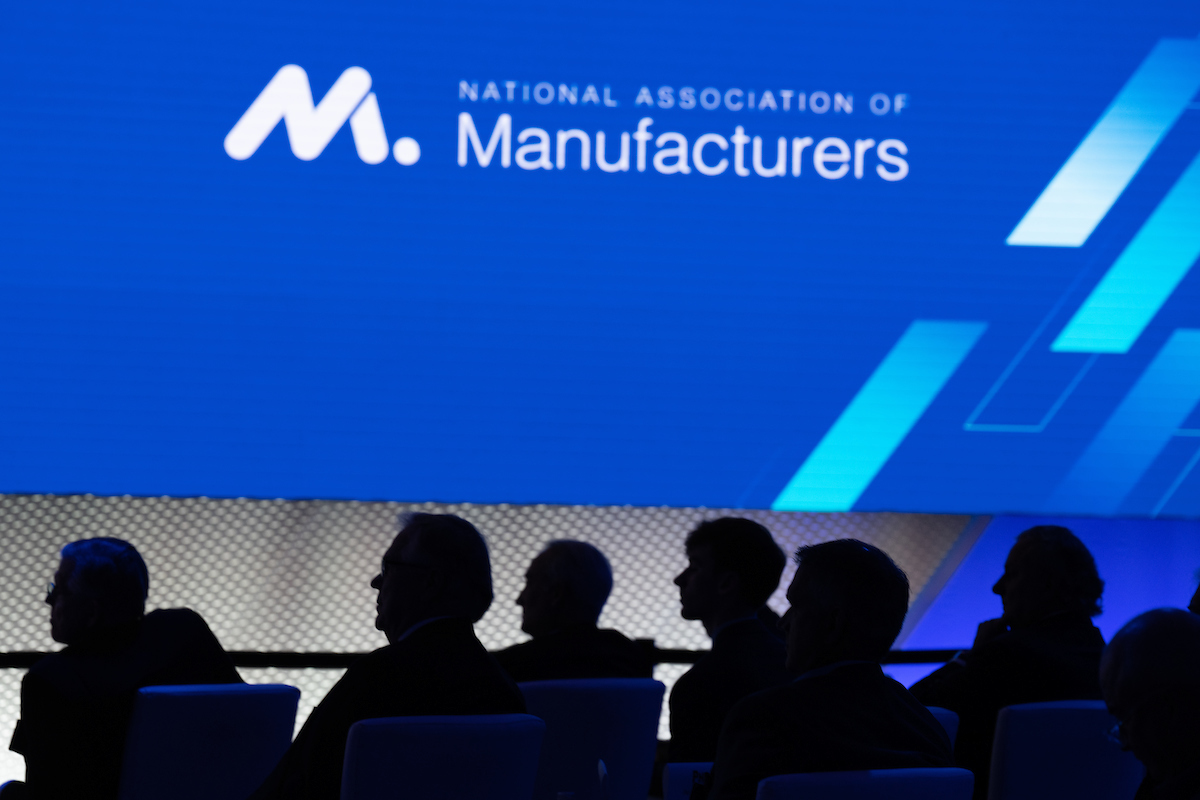
The NAM is constantly working to support and strengthen the men and women who make things in America. That mission is upheld by outstanding members of the NAM Board of Directors and their commitment to promoting the industry’s competitiveness on the global stage—a goal laid out in the NAM’s “Competing to Win” agenda.
Welcoming new faces: A number of new members have been elected to the board and will begin their two-year terms in January. They come from many sectors of the industry and companies both large and small, holding an array of leadership roles and boasting a wide range of experience. All of them are dedicated to ensuring that manufacturers in the U.S. have the tools they need to prosper.
The new members include the following:
- Edward Blair, president, Lutron Electronics Co., Inc.
- Sara Beth Burton, senior vice president, global supply chain, Hallmark Cards, Inc.
- Richard Cammarano, president and chief executive officer, Tech-Etch, Incorporated
- Karl Ehemann, vice president, global manufacturing and quality, Corning Incorporated
- Ed Elkins, executive vice president and chief marketing officer, Norfolk Southern Corporation
- Cynthia Farrer, senior vice president, global operations and integrated supply chain, Allegion plc
- Aimee Gregg, vice president and general manager, containerboard and recycling, International Paper
- John Hartner, founder, Digital Industrialist LLC
- Christopher Kastner, president and chief executive officer, Huntington Ingalls Industries
- Ram Krishnan, executive vice president and chief operating officer, Emerson
- Reece Kurtenbach, chief executive officer and president, Daktronics, Inc.
- Rose Lee, president and chief executive officer, Cornerstone Building Brands
- Thomas Long, co-chief executive officer, Energy Transfer LP
- Michael McGarry, chairman and chief executive officer, PPG
- Lori Miles-Olund, president, Miles Fiberglass & Composites, Inc.
- Christopher Perkins, president North America and senior vice president Taste & Beyond North America, Firmenich, Inc.
- Kimberly Ryan, president and chief executive officer, Hillenbrand, Inc.
- Karin Shanahan, executive vice president, global product development and supply, Bristol-Myers Squibb Company
- Matt Shields, senior vice president, global animal health manufacturing, Merck & Co., Inc.
- Sachin Shivaram, chief executive officer, Wisconsin Aluminum Foundry
- Shruti Singhal, chief executive officer, Chroma Color Corporation
- Mark Smucker, president and chief executive officer, The J.M. Smucker Company
- Matt Wood, national industry leader, commercial products practice, FORVIS
- Brent Yeagy, president and chief executive officer, Wabash
- Renée Zemljak, executive vice president, midstream, marketing & fundamentals, Ovintiv USA Inc.
What we’re saying: “The diverse backgrounds of our new board members, and their varied experience across many manufacturing sectors, make their counsel invaluable to the NAM in its efforts to bolster the industry’s competitiveness,” said NAM Chief of Staff Alyssa Shooshan. “We are counting on their insights and dedication to help steer manufacturers through this turbulent time and into a position of even greater strength.”
What’s the Next Phase of Digital Evolution?
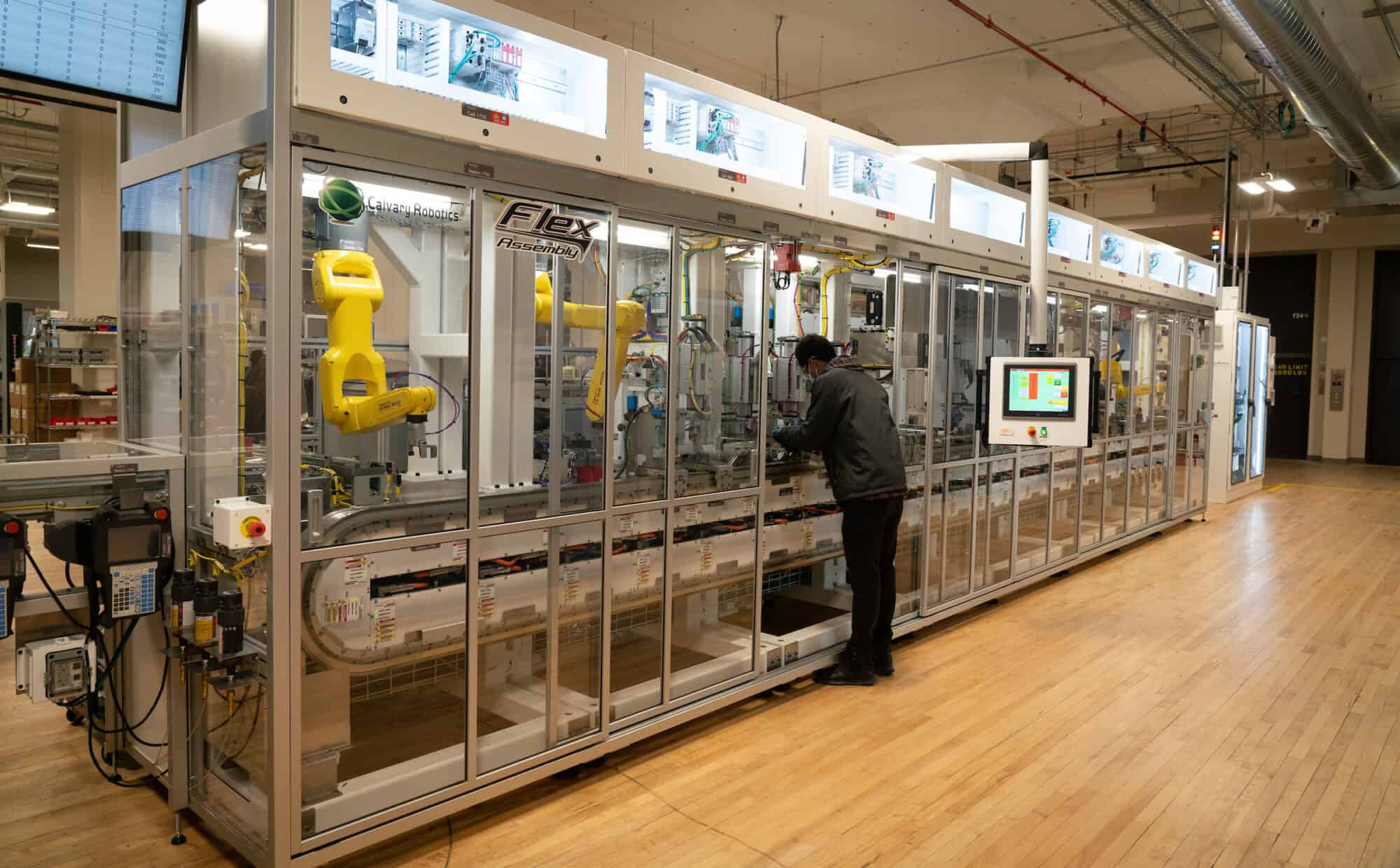
In late 2021, the Manufacturing Leadership Council launched the Manufacturing in 2030 Project, a comprehensive examination of the factors that will influence the industry leading up to the year 2030 and beyond. The latest milestone in this sweeping project is the release of The Next Phase of Digital Evolution.
This groundbreaking white paper examines the global megatrends like population, the economy, sustainability demands, and technology development – all of which will impact business decisions and are essential for manufacturing competitiveness.
Data’s Growing Role: Data is perhaps manufacturing’s most important asset, tracking everything from individual machine performance to the status of global supply chains. Developments in digital systems for factories, high-powered industrial networks and advanced communication technologies are giving rise to the ability to collect data.
Combined with a rise in analytics capabilities, manufacturers are now able to apply that data in powerful ways to improve processes, speed innovation, find new business opportunities and ultimately create conditions for greater competitiveness.
A Rising Middle Class: Population trends will influence where manufacturers build new factories, who they hire, the products that they make, organization for supply chains and who they are selling to.
Africa and Asia are projected to have the strongest population growth, and while traditional middle-class markets in the U.S., Europe and Japan are expected to grow at only modest rates, 88% of the next billion entrants into the middle class will be from Africa.
What’s to Come: Manufacturers will also need to consider their role in creating sustainable business practices and how they will overcome persistent workforce challenges. Institutional investors are pressuring businesses to significantly improve environmental practices, while the already yawning gap in skilled workers is expected to skyrocket to 2.1 million unfilled openings by 2030.
Technology could have a role in solving both of those issues. On the sustainability front, data can be key to monitoring emissions, utility consumption and waste, while also giving rise to new processes that improve on those metrics. For the workforce, data can empower workers to make more informed decisions, automation can eliminate repetitive tasks, and technologies like augmented and virtual reality can enhance training and upskilling.
To learn more about these and other insights, download the full white paper here.
Lincoln Electric Tour Showcases Innovation
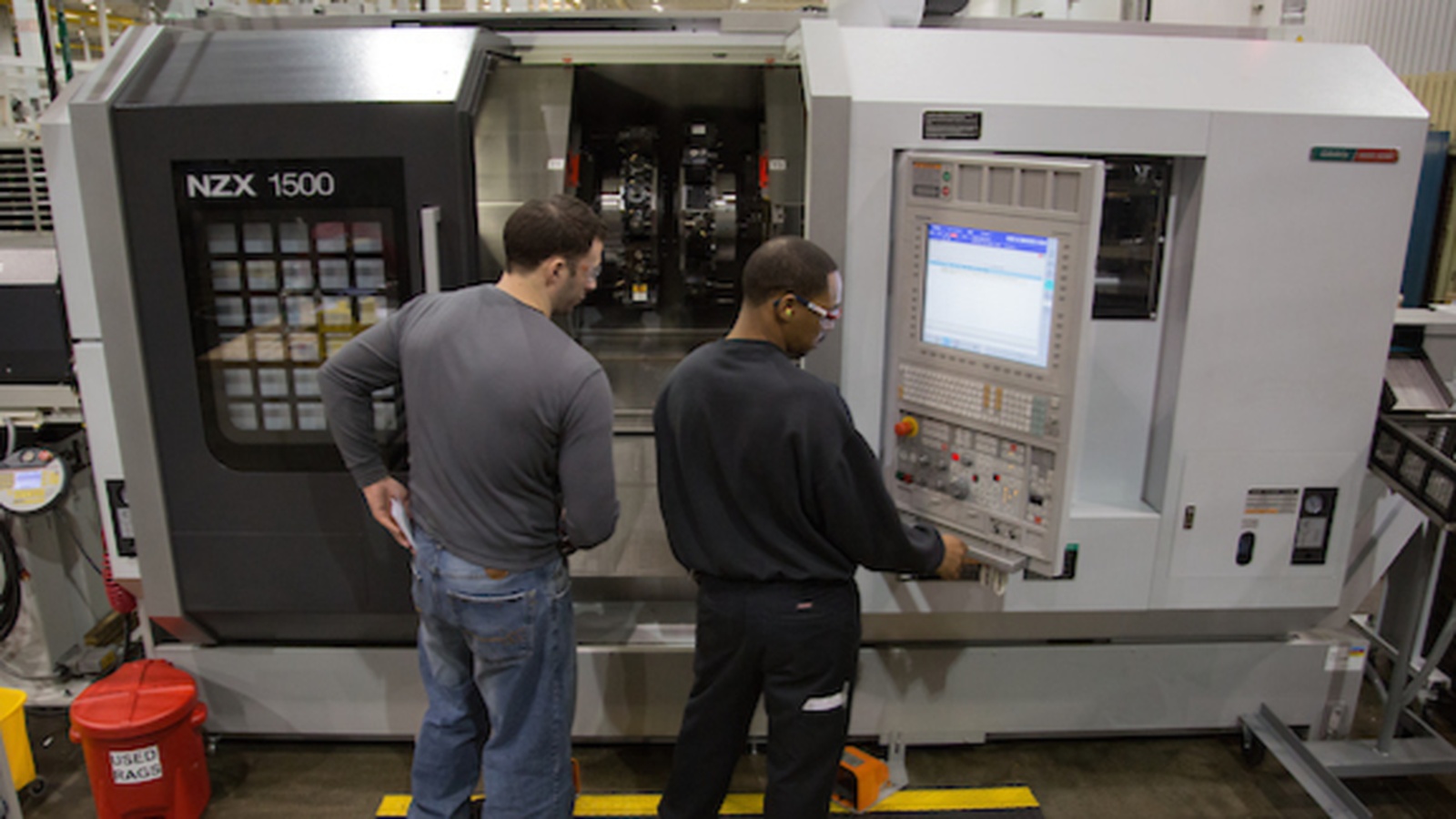
A word of caution about the Manufacturing Leadership Council’s plant tours: Attending one could make you rethink your manufacturing operations.
Inspiration abounds: The MLC, the digital transformation arm of the NAM, recently hosted a plant tour of Lincoln Electric’s headquarters in Cleveland. Inspired by the innovation on display, one attendee vowed “to go back to my own company and start asking what’s stopping us from implementing similar technologies and practices.”
- The two-day Lincoln Electric event included visits to the company’s welding and training center, its machine division, its 3D printing facility and its automation-solutions center.
- Tour participants also learned how the business is overcoming workforce shortages through culture and technology solutions.
What is Lincoln Electric? Lincoln Electric was founded in 1895 as an electric-motors manufacturer. Today it is a global industry leader in welding equipment and consumables, additive manufacturing and automation solutions. The company has locations in 19 countries and serves customers in more than 160.
Welding school: The first stop on the tour was Lincoln Electric’s world-class welding school, first opened in 1917 and relaunched in 2018 as the 130,000-square-foot Welding Technology & Training Center.
- Students at this state-of-the-art facility begin their training at virtual welding stations before moving to one of 150 training booths to use the real “arc.”
- Lincoln Electric also offers virtual classes, a turnkey curriculum for customers and “train the trainer” courses for welding instructors.
3D printing: Tour participants also got a look at the company’s Additive Solutions Center, the largest platform of its kind, which boasts 18 3D printing cells. It serves customers in the automotive, aerospace, marine and energy industries.
- The equipment prints replacement parts, molds, tooling and prototypes measuring up to eight feet long and weighing more than 8,000 pounds.
- It can print in a variety of metals, including mild steel, stainless steel, nickel alloys, bronze and Inconel.
Automation solutions: The Automation Solutions Center tour stop demonstrated Lincoln Electric’s twin answers to the manufacturing skills gap: innovation and tech solutions that increase productivity.
- The technology on offer includes automated arc welding products, collaborative robots, metal fabrication and assembly line solutions.
- Demand for Lincoln Electric’s collaborative robots is up as manufacturers cope with workforce shortages, tour participants learned.
High-performance culture: Tour attendees also learned about Lincoln Electric’s high-performance culture, which rewards success and provides employees with opportunities for growth and development.
- The company’s Incentive Management System for the production workforce includes output-based pay to maximize personal earnings potential, an annual profit-sharing bonus, a no-layoffs policy and an open-door policy.
- “I found the networking time to be highly valuable and came away with several ideas on employee retention,” said a tour participant.
Future focus: Looking ahead, Lincoln Electric leadership said the company’s core focus must and will be on its people—to continue to build a pipeline of talent and attract and develop the next generation of leaders.
NAM Competes to Win on Taxes

The NAM is leading the way forward on a range of policies to help boost innovation, opportunity and competitiveness for manufacturers in the United States—and that includes tax policies that ensure manufacturers can continue to compete and win.
The record: During tax reform, the NAM achieved its key priorities—a lower corporate income tax rate, a reduced tax burden on pass-through business income, the adoption of a modern territorial tax system, the retention of the R&D tax credit and the adoption of incentives for capital equipment purchases.
- Thanks to a more competitive tax code, manufacturers across America have been investing in jobs, facilities and their communities.
The road ahead: Of course, the NAM isn’t taking its eye off the ball. We are committed to protecting our gains and furthering progress—and that means ensuring the tax code continues to incentivize manufacturers’ ability to invest in innovation and growth. We’re focusing on three important tax priorities in the months ahead.
Research and development: On Jan. 1 of this year, a harmful tax change went into effect that makes R&D more expensive in the United States by requiring businesses to deduct their R&D expenses over a period of years.
- The NAM has been leading the charge to ensure the tax code continues to support innovation by allowing businesses to fully deduct their R&D expenses in the year in which they are incurred. Check out these company stories on the importance of tax policies that support R&D.
Interest deductibility: When manufacturers borrow funds to buy capital equipment, the interest they pay on those loans is tax deductible up to a certain limit. But a recent change in the tax law modified how that limit is calculated—shrinking the deduction, making debt financing more expensive and leaving less capital for job creation and investment.
- The U.S. is the only OECD country with such a strict interest limitation, so the NAM is working with members of both parties in Congress to reverse the new limit calculation and enhance manufacturers’ ability to compete. Read more about the NAM’s work on this provision here.
Full expensing: Under present law, manufacturers can deduct 100% of their investments in assets with long useful lives, supporting their ability to acquire vital equipment and strengthening their competitiveness. However, the ability to deduct 100% of these costs begins to phase down at the beginning of 2023 and is set to completely expire in 2027.
- The NAM is leading the business community in advocating for full expensing permanency, joining with members of Congress to support legislation that would create certainty for manufacturers. See how full expensing has benefited small manufacturers in the United States here.
The last word: “The NAM is fighting to protect manufacturers across the country,” said NAM Senior Director of Tax Policy David Eiselsberg. “Protecting R&D, interest deductibility and full expensing will provide the tax certainty necessary for manufacturers to continue to invest in jobs and growth.”
Learn more: Check out the NAM’s full tax agenda in “Competing to Win.”
How to Get the Most Out of R&D
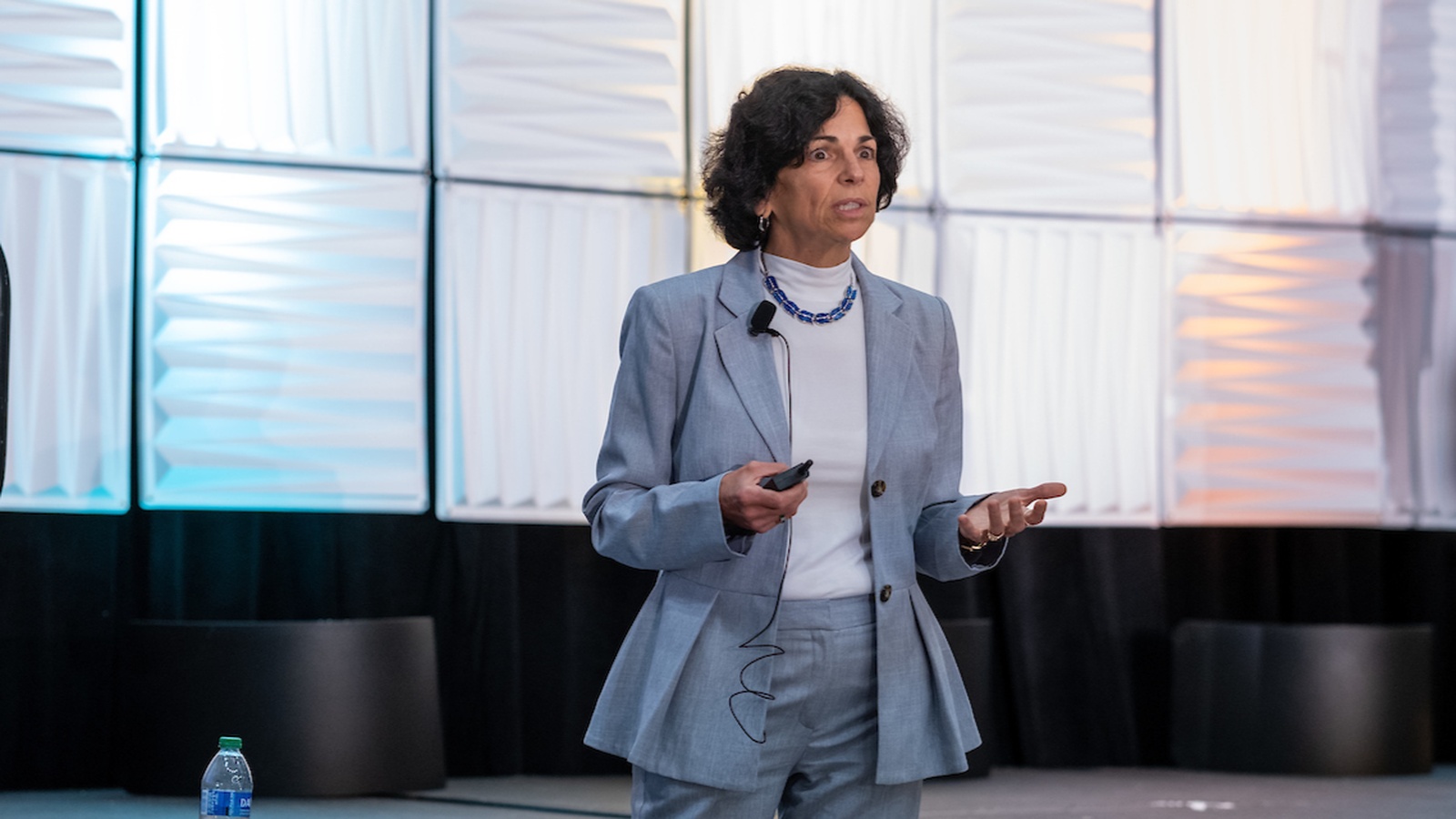
How should companies design R&D teams and processes to create the best possible results? That’s the challenge that Babson College Professor of Innovation Management Gina O’Connor addressed in her talk at the Innovation Research Interchange’s annual conference back in June. The IRI is a division of the NAM that advances the field of innovation management by creating contemporary practices—in R&D and many other areas.
A common problem: In an extensive research project at Babson College, O’Connor worked with experts from Goodyear, Synthomer and Diageo to study companies and decipher best R&D practices. She noticed a recurring theme: R&D professionals were being used by companies to solve urgent technical issues rather than to discover and invent.
- “In many organizations R&D has this feeling of being an order taker and of having to solve problems that are finely tuned and narrowly scoped,” said O’Connor. “That erodes confidence—and eroded confidence reduces empowerment.”
Empowerment and autonomy: O’Connor described empowerment as the authority to determine which projects and initiatives to take on and what problems to tackle. Meanwhile, autonomy refers to the authority to make final decisions.
- So, what do R&D professionals need? According to O’Connor, most want a moderate amount of empowerment, but not complete control over what to do.
- “We want to make sure that there’s organizational commitment somewhere associated with what we are doing, but we don’t just want to be told what to do,” as she put it.
So, what works? O’Connor explained that organizations with structureless R&D systems often had erratic decision making, sudden disruptions and unexpected changes in direction that left employees feeling powerless.
- Similarly, organizations with R&D processes that were too formal were also alienating to employees, who felt there wasn’t any room for flexibility or discussion.
- In contrast, the best systems included strong project leaders, consistent back and forth between the R&D group and organizational leadership, constructive communication, clearly outlined goals and trust in employees.
A last piece of advice: Training and developing project leaders is among the most essential steps in achieving successful R&D, said O’Connor.
- “What you need to be doing as a team leader every day is checking in with every member of your team, seeing what they need, where they are, what has happened,” said O’Connor. “It has to be an interactive, interpersonal kind of a thing.”
Learn more: Head on over to the IRI website to check out more of its programs and events.
Manufacturers Are Getting Tough on Cybersecurity

More companies are taking a disciplined approach to the growing threat of cyber attacks, according to a new cybersecurity survey from the Manufacturing Leadership Council. The MLC is the digital transformation arm of the NAM.
- The survey, which included input from 160 companies, indicates a dramatic change in how seriously manufacturers consider cyber threats compared to 2018, when the MLC last conducted the same survey.
Who’s prepared: Nearly 62% of manufacturing companies say they have a formal cybersecurity plan in place, according to the survey.
- That’s up from 2018, when barely 33% of manufacturers indicated they had devised and adopted formal cybersecurity plans that encompassed their plant floors.
- Nearly 40% of respondents said they had a high level of confidence in their internal cyber expertise, compared with just 25% who expressed such certainty in 2018.
More attacks expected: Yet even as better cybersecurity strategies are put in place, nearly 79% of survey respondents said they expect more attacks in the next year.
- That figure is up from 64% in 2018.
- The most frequently cited reasons for this prediction are increased levels of cyber crime and cyber terrorism and greater connectivity in manufacturers’ operations.
The effects on digital transformation: More than half the survey respondents expressed concern that cybersecurity issues could affect the speed and scope of digital transformation.
- 14% said cybersecurity could be a major obstacle in the next five years, with another 40% describing it as “an issue of concern.”
- Close to half—43%—said they consider cyber a part of doing business in a digitally transformed world.
Proactive measures: More manufacturers are taking advantage of publicly available safeguards, such as the NIST Cybersecurity Framework, to underpin their strategies.
- Nearly 58% of respondents said they have adopted the NIST framework, up from 48% in 2018.
- 45% said they have cyber insurance, compared to the 18% that said they had it in 2018.
The coming challenge: In the past four years, manufacturers have made significant strides to combat the growing problem of cyber attacks against the industry.
- However, manufacturers will need to stay a step ahead of cyber criminals as the number and sophistication of attacks increases.
See the survey: Review the survey findings for an in-depth look at how manufacturing leaders are thinking about cybersecurity in manufacturing’s digital era.
Get help: NAM Cyber Cover was designed specifically to provide enhanced risk mitigation and protection for manufacturers and their supply chains. Find out more at www.namcybercover.com.
CHIPS and Science Act Becomes Law
![]()
President Biden has signed into law the CHIPS and Science Act of 2022, legislation that promises to bolster manufacturers’ competitiveness, according to the NAM.
Supercharging manufacturing: “The CHIPS and Science Act [is] a once-in-a-generation investment in America itself, a law that people in America can be proud of,” Biden said today. It “supercharges our efforts to make semiconductors here in America. … [We] must lead the world in the production of these chips. This law will do exactly that.”
- NAM President and CEO Jay Timmons was on hand for the signing, along with many other business leaders.
- “Manufacturers thank congressional leaders from both parties who got this bill across the finish line and President Biden and Secretary Raimondo for their leadership,” Timmons said following the signing.
The background: The bipartisan measure, previously called the CHIPS-Plus Act, was passed by the U.S. Senate and House of Representatives in July. It provides more than $52 billion in funding to semiconductor manufacturing and scientific research.
- “Every manufacturer in America will benefit from [this legislation], whether they make chips, make products that require chips or are part of a supply chain disrupted by the semiconductor shortage,” Timmons said.
Other components: In addition to provisions for the domestic manufacturing of semiconductor chips, the CHIPS and Science Act also:
- Supports new research on critical minerals;
- Increases funding for the Department of Energy’s Office of Science, the National Science Foundation and the National Institute of Standards and Technology;
- Sets new policies for sending humans back to the moon and ultimately to Mars; and
- Expands rural STEM education.
Still work to do: Though the legislation will be a boon to manufacturers, it omits solutions to some critical challenges facing the U.S., Timmons said. These include:
- China competition legislation;
- Anti-counterfeiting measures;
- Critical trade provisions; and
- Further investments in supply chain resilience and workforce development.
Why it’s crucial: “Our economic future and America’s leadership in the world depend on a competitive manufacturing industry,” Timmons continued.
- “Congress has acted wisely with the CHIPS and Science Act. Now we need Congress to continue standing with manufacturers and focus on policies that will help us compete with China and other countries, not make it more expensive to make things in America.”
How to Protect Your Company’s IP
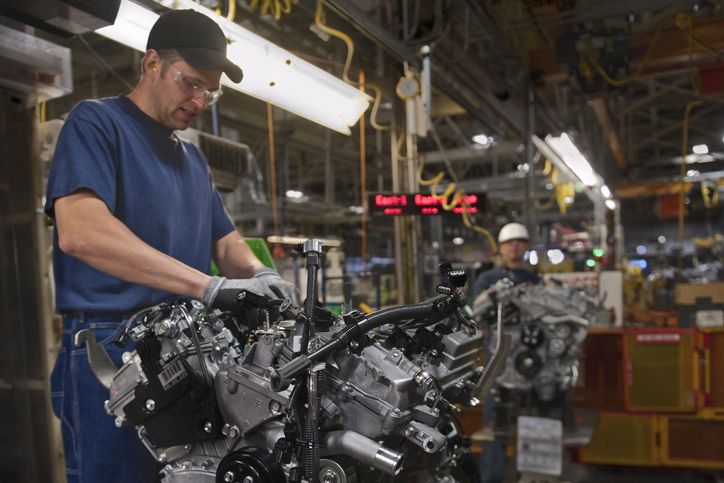
Safeguarding intellectual property is possible even when patents are not stringently enforced, according to James Nebus, associate professor and chair of the business department at Suffolk University’s Sawyer School of Business. He discussed the topic at this year’s annual Innovation Research Interchange conference back in June. The IRI is a division of the NAM dedicated to advancing innovation management and creating best practices in the industry.
Protecting IP: In his keynote speech, Nebus outlined several actions taken by well-known companies to defend against patent infringement in “weak-enforcement countries.”
Raise barriers: One of the most successful strategies was raising the barrier to imitation, Nebus said. Companies that have used this method to guard against what Nebus called “product knowledge leakage” include DuPont and Dow. They have taken the following steps:
- Installed information technology defensive shields.
- Appointed trade secret managers.
- Conducted employee IP training.
Try a different barrier: Another way that companies have kept imitators at bay is to “bundle imitable products with complementary inimitable products,” according to Nebus.
- This is a strategy IBM began to employ many years ago. “When computer hardware first became a commodity, IBM … transformed themselves from a computer hardware company to a solutions and services company,” Nebus said.
- “And by doing that, they changed the parameters of the customer ‘buy decision’ from the price of the hardware to the value of the solution to their business.”
Advanced manufacturing: Another way to raise the “barrier to commercialization,” as Nebus calls it, is to use advanced manufacturing techniques that are not easily copied.
- Apple Inc. did this well in 2008, when it came out with its ultra-light, ultra-thin MacBook Air to compete with lower-cost Asian PC vendors, Nebus said.
- “The packaging technology that enabled that design … started with CNC, computer numerically controlled milling process, which at that time was really used for low-volume prototypes. They invested in manufacturing R&D to transform that process … to high-volume production,” he explained.
- “The imitators really couldn’t make that big investment, so Apple separated themselves.”
Parting thoughts: Nebus ended his talk with three takeaways for the audience.
- First, “an effective strategy consists of implementing the protection mechanisms necessary to raise one of the barriers above the abilities of the imitator.”
- Second, companies may require different strategies for different countries, especially if some are developed and others are developing.
- Finally, companies should decide where to locate headquarters not just “on economic factors. [Remember] to take IP risks into consideration.”
Learn more: Head on over to the IRI website to check out more of its programs and events.
A Summer Reading List for Innovative Manufacturers
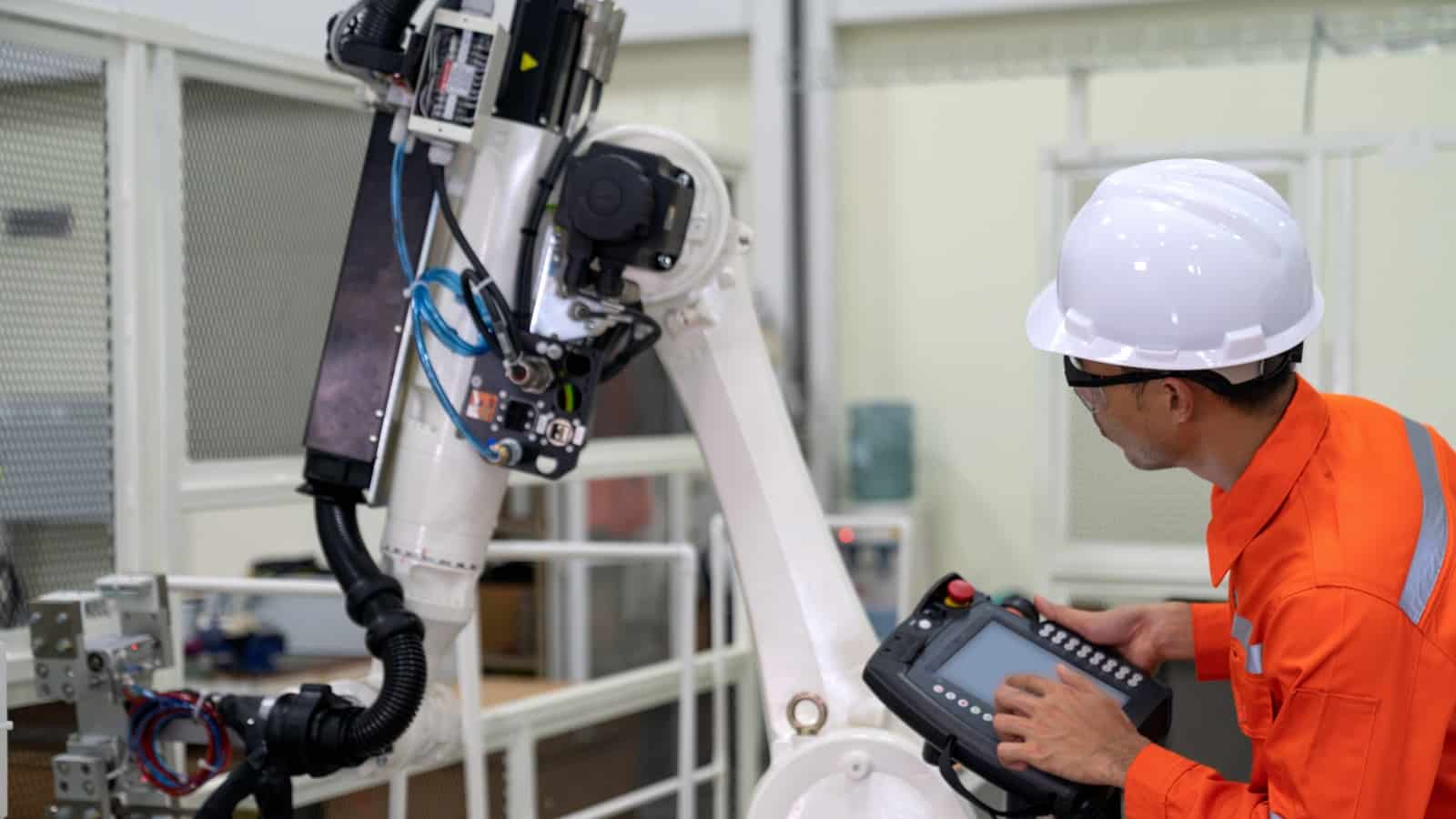
Heading to the beach? Take along the Manufacturing Leadership Council’s summer reading list to catch up on today’s top trends in digital manufacturing while you catch some rays. With these articles, you’ll discover new ideas, technologies and best practices to give your company a competitive edge.
Workforce: Leading the Way to Workforce Optimization. As digitization changes employees’ expectations of their employers, manufacturers must adapt. Examples include options for remote work, interactive training, agile and rapid collaboration platforms, career development, work-life balance and more.
Industrial automation: Camozzi’s Autonomous Vision. Successful autonomous manufacturing will depend on the fundamental relationship between humans and machines, says Camozzi Group CEO Lodovico Camozzi, whose company makes industrial machinery. In a recent interview with the MLC, Camozzi shared his view of manufacturing’s autonomous future, including:
- How advanced additive manufacturing approaches promise new production paradigms;
- The importance of collaboration in driving innovation and excellence; and,
- Why the industry must maintain a human focus in today’s digital world.
Cybersecurity: Ransomware Attacks Increasingly Targeting Manufacturers. Think your business is safe from hackers? Think again. Ransomware attacks against manufacturers are on the rise. All businesses should be on guard against cyber extortion, advises Peter Vescuso, vice president of marketing for industrial cybersecurity provider Dragos and a member of the MLC.
Supply chain: How Manufacturers Can Navigate Supply Chain Challenges.
As global supply chain woes, worker shortages and wage inflation challenges intensify, manufacturers everywhere want to know the best way to navigate them. In this article, a panel of industry experts shares top tips to sustainably and profitably overcome current obstacles.
Artificial Intelligence: AI Roadmap: How Manufacturers Can Amplify Intelligence with Artificial Intelligence. Artificial intelligence offers manufacturers a host of benefits, including better visibility into supply chains, insights from predictive analytics and the ability to quickly respond to unexpected changes in demand. A six-step road map can help manufacturers looking to integrate AI into their businesses.
5G: 5G Will Help Unlock M4.0’s Potential. 5G technology offers speed and capacity advantages to manufacturing companies. According to the MLC’s recent Transformative Technologies survey, 26% of manufacturers have already invested in 5G technology. More than half expect to invest or are considering investing in the technology over the next two years to take advantage of 5G’s benefits.
Sustainability: Overcoming Roadblocks to Advance Sustainability Programs.
The manufacturing industry is expected to improve its sustainability and keep leading the fight against climate change. However, making green changes to processes and procedures can be costly. To get the most bang out of their sustainability investments, manufacturers should focus on data-driven initiatives and indicators.
Looking for more digital manufacturing insights? Browse the Manufacturing Leadership Journal for additional information on technology, organizational structure and leadership in manufacturing’s digital era.
